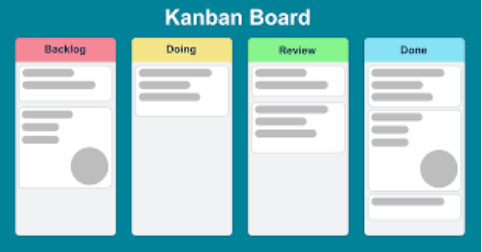Using Kanban
Kanban, a Japanese term meaning billboard or signboard, is a production management system that aims to minimise waste and maximise efficiency. Kanban has been translated into a personal scheduling system that restricts work-in-progress to enhance productivity and avoid burnout (Benson and DeMaria Barry, 2011).
Put simply, Kanban involves limiting (say to three or four) the number of tasks you are working on at any one time. When you have completed one task, you can introduce another – and so on.
Use Post-it notes and a whiteboard with three columns – ‘To do’, ‘Doing’, ‘Done’ – (see figure below) and move each task along as it progresses. You can also add a ‘Waiting’ column for future tasks (or, if urgent, allocate them to other people). Larger tasks can be broken down into manageable chunks. Ideally, finishing one task before completing another will become a habit.

For more information, see here. Kanban boards can also be set up online, see here.